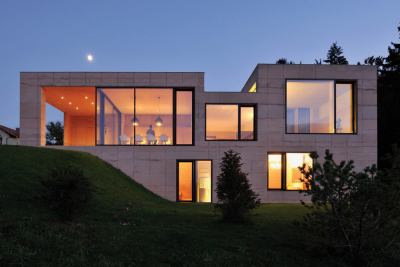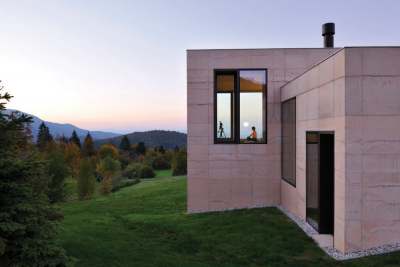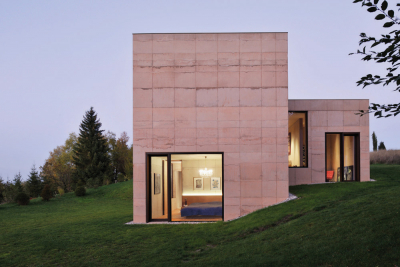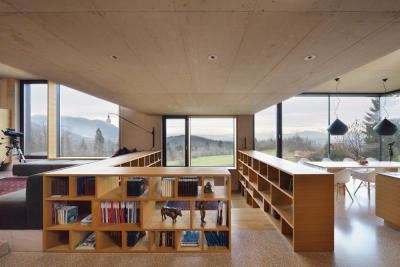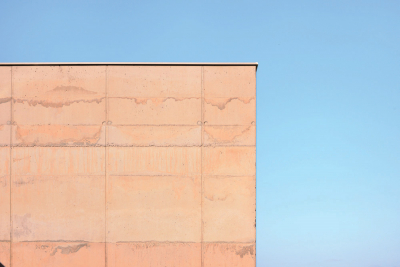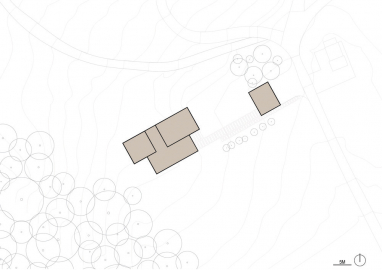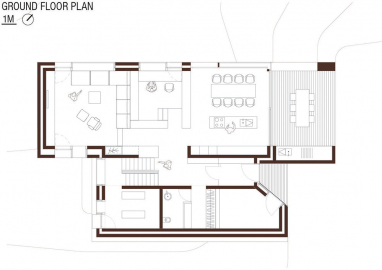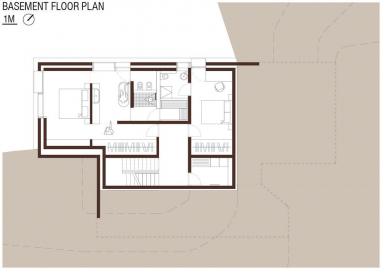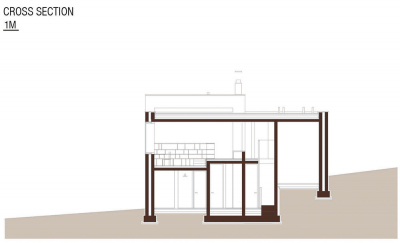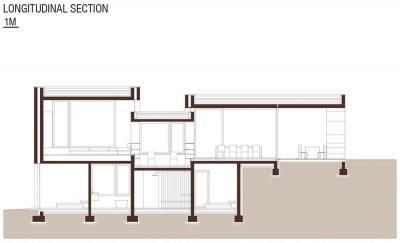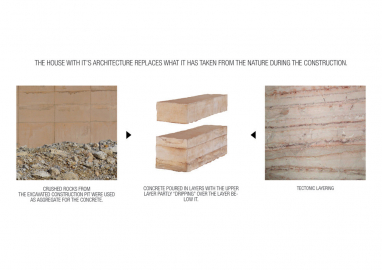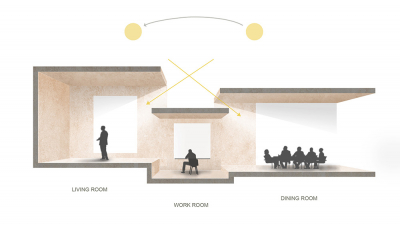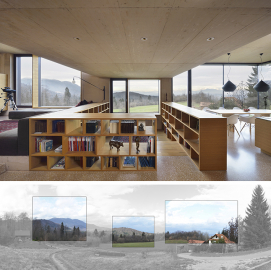House on Golo
The house with it's architecture replaces what it has taken from the nature during the construction.
With every realisation of a project the architect fundamentally interferes with the natural or urban ambient. The site is never again the same as it was before the intervention. Because of that, the architects responsibility to the space into which he intervenes is even greater.
In the case of House on Golo, which is situated on a picturesque location, overlooking the peaks of Julijske Alpe, Karavanke and the Kamniško-Savinjske Alpe, one of the essential characteristics of the area is represented in the colour and the texture of the soil on which the house is built.
The house is sited as a set of three volumes of different heights, which follow the terrain configuration. The ground floor, spanning over three slightly different levels, corresponds to the living style of it's users. The study room is located on the lowest of the three levels of the upper floor and represents the centre of the house.
The house responds to its natural surroundings in many ways. The first is undoubtedly in framing the views to the silhouette of the surrounding Alpine peaks.
The window has in architecture a double role: on one hand it enables natural light to enter the interior of the house, on the other hand it also directs the views outwards towards the surrounding natural landscape. This is also very evident in House on Golo, since it's window openings were chosen very carefully – framing the peaks of Julijske alpe, Karavanke and Kamniške alpe, the view towards the valley,... This was also the reason for the seemingly random arrangement of windows openings on the facade.
When the construction pit was excavated a very characteristic colour of the rocks and the way that they were layered was revealed. This led to an unusual technique of casting the concrete – the concrete was deliberately poured in layers in a way so the upper layer always partly „leaked“ over the layer below it. Texture of the leaks shows how the walls were really made.
In a way, the house's facade is a tectonic record of how the concrete was cast and poured. It mimics the structure of the soil on which the house stands. In a way it, symbolically, replaces what it has taken from nature during the construction.
The most striking difference between the interior and the exterior is that while they are both made from the same aggregate, the exterior is very rough (by using the technique mentioned before) and the interior was carefully cast to be as smooth as possible. The floors are also made from the same material, but finished as polished terrazzo.
The only exception is the study room. It is made completely out of wood and serves as an ambiental contrast to the fair-faced concrete walls and terrazzo floors of the rest of the living space. The concrete walls are designed as a background to the owners' collection of art pieces.

